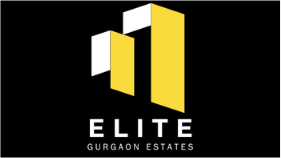Gurgaon Real Estate Map Decoded: Where to Invest in 2025?

The year 2025 marks a great turning factor in Gurgaon real estate journey. With a sequence of infrastructure upgrades, evolving housing preferences, and renewed investor confidence, Gurgaon is witnessing a change from a business-centric township to a well-balanced city ecosystem. Strategic planning, upcoming metro projects, and robust developer activity are reshaping micro-markets throughout the city, growing new funding avenues for investors and buyers alike. This article targets to decode Gurgaon`s property map for 2025 and spotlight the maximum promising sectors to consider for investment. One of the most appealing and fast-appreciating zones in Gurgaon is the Dwarka Expressway corridor. Stretching throughout sectors 102 to 113, this vicinity has seen brilliant price increase among the various sectors, with a few localities witnessing a doubling in assets values. The completion of the Dwarka Expressway, now operational, has extensively decreased journey time between Gurgaon and IGI Airport. Notable sectors which include 110, 111, and 113 have emerge as hotspots for premium and mid-income housing. Investors right here are anticipating capital appreciation of 20–30% annually, pushed via way of means of robust infrastructure, seamless connectivity, and a surge in residential demand. Another key region seeing sustained increase is the Southern Peripheral Road (SPR), connecting Golf Course Extension Road to NH- 48 and beyond. Sectors alongside the SPR—specifically 68to 79—are experiencing massive real estate traction because of the upcoming metro growth and the presence of pinnacle builders which include M3M, Smartworld, and Mahindra Lifespaces. With business and retail hubs being evolved parallelly, these sectors provide a super mixture of residential and lifestyle convenience. Average unit costs right here varies around ₹10,000 to ₹12,000 in per square feet and a 10–15% yr-on-yr appreciation is predicted in 2025. Moreover, the SPR`s strategic connectivity to Sohna, New Gurgaon and IGI Airport along NPR complements its funding options. Golf Course Extension Road (GCX) maintains to dominate the ultra-luxurious phase of Gurgaon real estate market. This corridor, encompassing sectors 58 to 63, is home to a number of the top rated residential projects in the city, like DLF, Emaar, and Adani Realty. With pricing factors ranging among ₹18,000 to ₹22,000 in per square feet, Golf Course Extension Road is good for high-net- ell worth people and luxury-seeking buyers. The region benefits from extremely good social infrastructure, top-tier schools, hospitals and dining experiences. In 2025, upcoming underpasses and decongestion plans at key intersections are predicted to similarly increase accessibility and demand. Although prices are high, Golf Course Extension Road remains one of the solid and worthwhile micro-markets for long-term investment and rental income. New Gurgaon offers the perfect mix for investors looking for value and growth potential. This belt is strategically located between the Dwarka Expressway, NH-48 and SPR across 81-95 and 102-113. New Gurgaon is a mix of integrated townships, affordable apartments and intermediate segment projects. The average pricing is ₹7,500 to ₹5,000 per square feet, which means there will be a significant increase in value over the next five years. Thanks to the availability of ready to move options, continuous infrastructure upgrades and excellent rental revenue (3.5-4.2%), sectors such as 82, 85, 91, and 95 attract both end users and investors. With future RRT (local rapid transport system) and Metro connectivity that is likely to touch the region, the new Gurgaon is considered the future of affordable urban living. Another aspiring area worth considering Sohna and South Sohna Corridor. Sectors such as 33, 36 and 48, and the adjacent SOHNA sectors will benefit from the upcoming expansion of Delhi-Mumbai industrial corridors and road infrastructure. Real estate prices in these sectors range from 6,000 to 7,200 per square Feet, making them attractive to middle-income buyers and investors. Many projects are under construction, and these areas promise long-term returns and are ideal for investors ready to wait for 4-5 years. Under the newly emerging hotspots, sectors such as sectors 88B, 37D and 36A are gaining interest in Gurgaon real estate. These areas are located at a critical intersection of the Dwarka Expressway and the Northern Peripheral Road (NPR), offering future proof connectivity and high rental possibilities. In fact, sectors such as 88B have already seen traction between buyers and medium-sized income buyers, thanks to the Rs 80 lacs to Rs. 1 crore project bracket, but are relatively affordable classes considering the benefits of the location in the region. With the expansion of commercial activities into these sectors, it is expected to become a mini business area with strong residential areas. From an investment strategy perspective, 2025 offers a variety of options. Short-term investors can adopt rotation strategies in Dwarka or SPR location and exit post- possession for capital gains. Long-term investors focusing on passive income should consider new Gurgaon or sectors along the sohna road with stable yields and low vacancy rates. For luxury-oriented buyers and those planning a second home, going for the golf course remains the first option. However, there’s remains a risk, just like any other investments. Delay in execution in large infrastructure projects, oversupply of selected corridors such as the Dwarka Expressway, and saturation in luxury markets such as Golf Course Extension Road can affect returns. It is important to carry out due diligence of Developer’s track record, RERA status and construction progress before investing your hard-earned money. Finally, Gurgaon real estate landscape is diverse, dynamic and full of possibilities in 2025. Whether you’re the first-time buyer, experienced investor, or someone looking for rental income, the city offers something to every profile. Careful planning, market research and clear investment goals allow you to navigate the rapidly developing real estate scenario in the city and build a profitable portfolio that has been tested at times.
Addressing Traffic and Pollution: Can Delhi-NCR Real Estate Adapt?

The Delhi-NCR region, recognized for its bustling financial system and expansive urbanization, faces chronic demanding situations: Traffic and Pollution. These dual problems have come to be a tremendous challenge for residents, policymakers, and groups alike. Amidst this, the actual property region, a cornerstone of the region`s improvement, stands at a crossroads. How can Delhi-NCR actual property adapt to mitigate those demanding situations and create sustainable residing environments? Understanding the Problem Delhi-NCR’s city sprawl, encompassing towns like Gurgaon, Noida, and Ghaziabad, has witnessed remarkable boom during the last decades. However, this speedy improvement has frequently outpaced infrastructural planning. The result? Daily visitor’s jams stretching for kilometers, growing vehicular emissions, and a pointy decline in air fine. The Air Quality Index (AQI) regularly hits dangerous ranges all through winters, exacerbating fitness issues for millions. For actual property builders, those problems aren’t simply environmental however additionally economic. Homebuyers nowadays prioritize elements like Traffic and Pollution, and commuting ease while making assets decisions. A failure to cope with those issues dangers making homes much less attractive, specifically to an an increasing number of environmentally aware demography. How Real Estate Can Drive Change 1. Transit-Oriented Development (TOD) One promising answer to address the problem of Traffic and Pollution is the adoption of Transit-Oriented Development. By specializing in growing residential and business areas close to metro stations, bus terminals, and important delivery hubs, builders can notably lessen residents’ reliance on non-public vehicles. Projects like those inspire using public delivery, thereby slicing down vehicular emissions. 2. Sustainable Construction Practices Green buildings, geared up with energy-green structures, waste control solutions, and rainwater harvesting, are not a luxurious however a necessity. Certifications like IGBC (Indian Green Building Council) or LEED (Leadership in Energy and Environmental Design) can provide homes an aspect withinside the aggressive marketplace at the same time as contributing to environmental sustainability. 3. Integration of Green Spaces Urban parks, vertical gardens, and inexperienced roofs can assist offset pollutants at the same time as enhancing residents’ fine of life. Cities like Gurugram are already seeing a few initiatives contain those features, providing cleanser and more healthy environments for homeowners. This step is one of the most effective to address the menace of Traffic and Pollution in Delhi NCR. 4. Air Filtration Systems in Homes Developers can contain superior air filtration structures into residential and business buildings, making sure that indoor air fine stays unaffected with the aid of using outside pollutants. This characteristic is particularly attractive in Delhi-NCR, in which outside air pollutants is a perennial issue. 5. Smart Traffic Management inside Townships Modern gated groups and incorporated townships can install clever visitors structures, lowering congestion inside and round their premises. Features like committed biking lanes, travel services, and well-deliberate street networks can set an instance for large city improvement. The Role of Government and Policy While the actual property region has a important function to play, authorities intervention is similarly essential. Policies that incentivize inexperienced buildings, subsidize sustainable production technologies, and implement stricter vehicular emission norms can supplement private-region efforts. Additionally, large-scale initiatives just like the Regional Rapid Transit System (RRTS) and growth of metro networks are steps withinside the proper direction. The Role of Government and Policy The demanding situations of visitors and pollutants in Delhi-NCR are daunting however now no longer insurmountable. The actual property industry, with its capacity to form city landscapes, has a completely unique possibility to steer the price towards sustainable living. By prioritizing green practices, integrating contemporary-day technology, and taking part with authorities initiatives, the world can’t simplest adapt however thrive in an environmentally aware future. The query remains: Will builders capture this possibility to innovate, or will they stick to traditional processes which could quickly come to be obsolete? For the sake of Delhi-NCR`s residents, the previous is the want of the hour.

